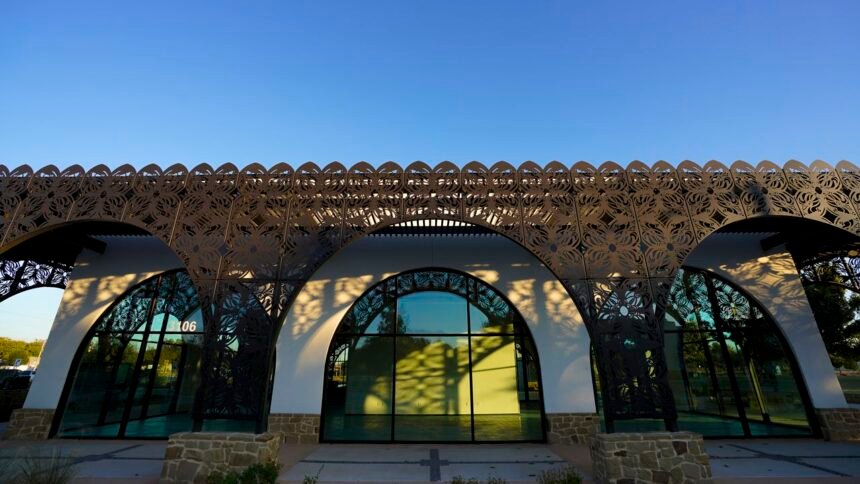The World Heritage Center, a new visitor hub highlighting the history of San Antonio’s UNESCO-designated Missions, is set to open next month on the South Side.
Why it matters: The center preserves and shares the sometimes overlooked stories of the generations of people who built San Antonio’s Missions.
Flashback: Residents first called for a World Heritage Center during the 2016 Land Use Symposium, which used community feedback to decide how the areas around the UNESCO sites should be developed.
- The site adjacent to the former Mission Drive-In on Roosevelt Avenue was selected in 2018. Construction began in December, after years of community surveys to shape designs and priorities.
- The project is funded by the 2017 and 2022 bond programs and a tax initiative that uses revenue from new developments to improve the area.
By the numbers: The center has 5,500 square feet of indoor space and 4,500 square feet outdoors.
Zoom in: Exhibits will highlight the Missions’ living legacies, including the preservation efforts and the work that went into securing the UNESCO World Heritage designation in 2015.
- Visitors will be able to interact with 3D images and videos featuring Missions descendants.
- Programming will include a speaker series, events where the community can meet descendants of the Missions and activities for children.
- An outdoor drum circle is expected to be completed by April.
Between the lines: A veranda designed by local artist Adriana Garcia wraps around the building and greets guests upon arrival. The veranda, gifted by the Tricentennial Celebration Commission, includes a heron and nopal (cactus) as its centerpiece.
- The heron, native to the San Antonio River, symbolizes life. The nopal represents the land’s Indigenous people.
- Tiles inspired by the Missions’ original frescoes complete the design.
- “It sets the stage for the interweaving of cultures that define our World Heritage San Antonio Missions,” Colleen Swain, director of the World Heritage Office, tells Axios.
What they’re saying: The center’s focus is on people who’ve contributed to the timeline of the Missions and fills a knowledge gap, Swain says.
- “You can see the Missions, you can see the artwork, you can see the archaeology, but it doesn’t really allude to the people that built those Missions and still live in the area, so it’s really about sharing those under-told stories,” she says.
What’s next: The grand opening is Feb. 7 at 10am.











